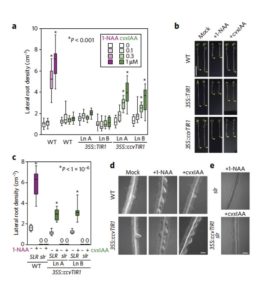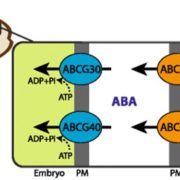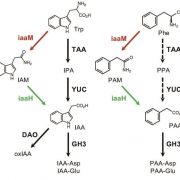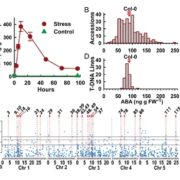Chemical hijacking of auxin signaling with an engineered auxin–TIR1 pair ($) (Nature Chemical Biology)

Gene redundancy and/or developmental defects of higher order mutants make it hard to study the role of individual components of auxin signaling. Structural biology approach can provide a detour that circumvents endogenous auxin signaling. Removing of the phenyl moiety of F79 in the auxin receptor TIR1 introduces a concavity that disables auxin binding. However, this gap can be filled if one attached a “bump” to an auxin molecule, sucy as an aryl group at the 5-position of IAA. Plants expressing concave TIR1 showed activation of auxin signaling only when treated with convex-IAA. This tool enabled Uchida and colleagues to determine TIR1-dependent auxin responses, including transcriptional responses, increases in lateral root density and acid-growth responses. The potential of this structural biology approach for other signaling pathways are yet to be explored. (Summary by Magdalena Julkowska) Nature Chem. Biol. 10.1038/nchembio.2555









